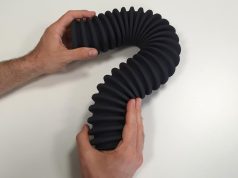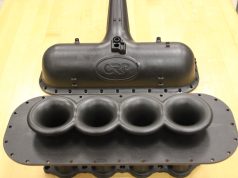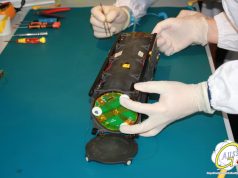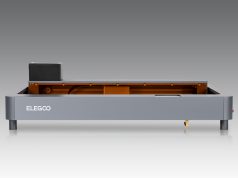EOS, technology and market-leader for design-driven, integrated e-manufacturing solutions in the Additive Manufacturing (AM) sector, has collaborated with Airbus Group Innovations (previously EADS Innovation Works), of Filton, Bristol, to complete an environmental lifecycle comparison of two key production technologies, rapid investment casting and Direct Metal Laser Sintering (DMLS™).
The Airbus Group Innovations-EOS eco-assessment, applied to an Airbus A320 nacelle hinge bracket (a highly standardized part), strove to include detailed aspects of the overall lifecycle: from the supplier of the raw powder metal, to the equipment manufacturer (EOS), and to the end-user (Airbus Group Innovations). Adapted from Airbus’ streamlined lifecycle assessment (SLCA) and ISO 14040 series requirements data, the testing will serve as the basis for continued “Cradle-to-Cradle” study into other aerospace parts, processes and end-of-life strategies.
“We have worked in a bold, new collaboration with Airbus Group Innovations on integrating business and ecological sustainability from sourcing through to product development,” said Nicola Knoch, environmental and sustainability consultant to EOS. “There is now a valuable, holistic baseline established on our technology regarding the measurable costs, benefits and impacts of DMLS. This sets the groundwork for future technology developments in Additive Manufacturing and further studies.”
As a first step, the SLCA was conducted on a generic bracket benchmarking the DMLS process with a conventional casting process used as the baseline. Comparing the lifecycle of a steel bracket (casting process) with the lifecycle of a design-optimized titanium bracket (DMLS):
- The use phase has by far the biggest impact in terms of energy consumption and CO2 emissions over the whole lifecycle of the bracket
- CO2 emissions over the whole lifecycle of the nacelle hinges were reduced by nearly 40 percent via weight saving that resulted from an optimized geometry, which is enabled by the design freedom offered by the DMLS process and the use of titanium
- Most significantly, using DMLS to build the hinge may reduce the weight per plane by 10 kilograms, a noteworthy saving when looking at industry “buy-to-fly” ratios
The second phase of the analysis focused on the manufacturing process for the design-optimized bracket using titanium as an ideal, common material — and, this time, benchmarking the manufacturing process of investment casting against that of DMLS via the EOSINT M 280 system:
- The total energy consumption for creating the initial raw powder metal, then producing the bracket in DMLS, was slightly smaller than the equivalent cast process steps (with the higher energy use of DMLS limited to the melt and chill cycle of its manufacturing profile and offset at the same time by a significantly reduced build time). Casting in this comparison was burdened with the furnace operation of burning an SLA (stereolithography) epoxy model, which uses considerable energy and generates greenhouse gases
- The DMLS process itself used only the material actually needed to make the part — thereby eliminating waste from secondary machining and reducing consumption of titanium by 25 percent over the cast application
“DMLS has demonstrated a number of benefits, as it can support the optimization of design and enable subsequent manufacture in low-volume production,” said Jon Meyer, Additive Layer Manufacturing Research Team Leader, in his final report. “In general, the joint study revealed that DMLS has the potential to build light, sustainable parts with due regard for the company’s C02 footprint.”
Notes to Editors:
As of the 1st January 2014, Airbus Group Innovations became the new name of EADS Innovation Works. For reasons of timing, the report, compiled prior to this rebranding refers throughout to EADS Innovation Works. More information on the brand change here.
You can find the complete study under downloads. For more information/image please contact Claudia Jordan.
Subscribe to our Newsletter
3DPresso is a weekly newsletter that links to the most exciting global stories from the 3D printing and additive manufacturing industry.






















